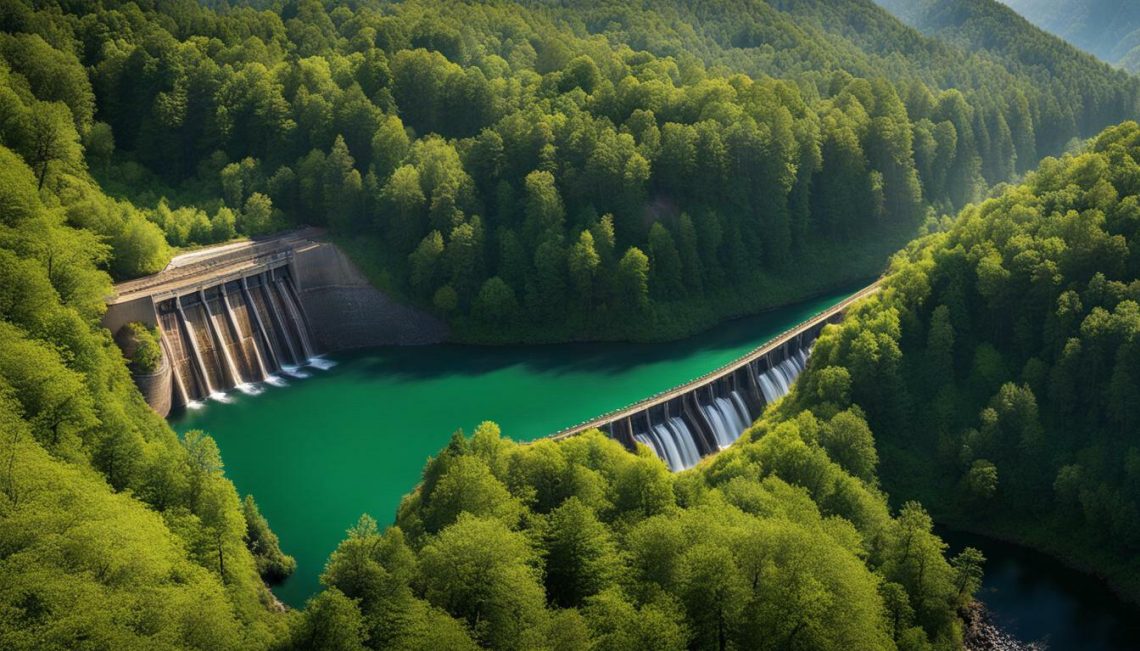A hydroelectric monitoring system is a critical component in ensuring the safe and efficient operation of a hydroelectric power plant. Regular maintenance is essential to reduce unplanned downtime and extend the lifespan of the facility. Monitoring parameters such as water level, flow rate, temperature, pressure, and more is necessary to…
-
-
Hydropower plays a vital role in generating clean electricity while maintaining a harmonious relationship with the environment. A hydro-friendly ecosystem refers to an environment that is compatible with hydropower projects and minimizes their negative impact on wildlife. Hydropower plants are considered better for the environment compared to other sources of…
-
A hydroelectric fish ladder plays a vital role in promoting the migration of fish and supporting aquatic life near hydroelectric facilities. These structures are designed to help fish navigate past dams, allowing them to safely move upstream and downstream. Fish populations rely on these fish ladders to overcome barriers and…
-
Hydropower partnerships, also known as hydroelectric collaborations, play a crucial role in driving the energy transition forward and expanding the deployment of hydropower technologies. Hydropower is currently the largest source of renewable energy worldwide and plays a critical role in decarbonizing the power system and improving system flexibility. The Collaborative…
-
A hydroelectric megawatt is a unit of measurement used to quantify the power capacity of a hydroelectric power plant. It represents a power output of one million watts. The capacity of a hydroelectric power plant is determined by factors such as the water flow and the change in elevation. Hydropower…
-
Hydroelectric plant decommissioning involves retiring and removing structures that have reached the end of their life cycle. As power generation technology evolves and infrastructure ages, the decommissioning of hydroelectric plants has become a common practice. But what exactly is a hydroelectric removal plan? Key Takeaways: Hydroelectric plant decommissioning is the…
-
Hydropower license renewal is a crucial process that allows hydropower projects to continue operating and contributing to green energy initiatives. It involves extending the license for a hydropower project, granting it permission to operate for an additional period of time. This process is overseen by the Federal Energy Regulatory Commission…
-
Hydroelectric dam construction projects involve harnessing the power of water to generate renewable energy. These projects play a vital role in sustainable development and are becoming increasingly popular worldwide. A hydroelectric construction project involves several steps, from the initial concept to the actual construction of the dam. American Municipal Power…
-
A hydroelectric impact statement, also known as an environmental impact assessment (EIA), is a systematic process used to identify, evaluate, and mitigate the potential positive or negative effects of a proposed hydroelectric project on the environment. The purpose of the assessment is to ensure that decision-makers consider the environmental impacts…
-
A hydroelectric resilience plan is a strategic approach to ensure the resilience of hydropower systems in the face of climate change impacts. It involves implementing a combination of soft and hard measures to enhance the robustness, resourcefulness, and recovery of the systems. Soft measures include developing strategies and regulations, incentivizing…









